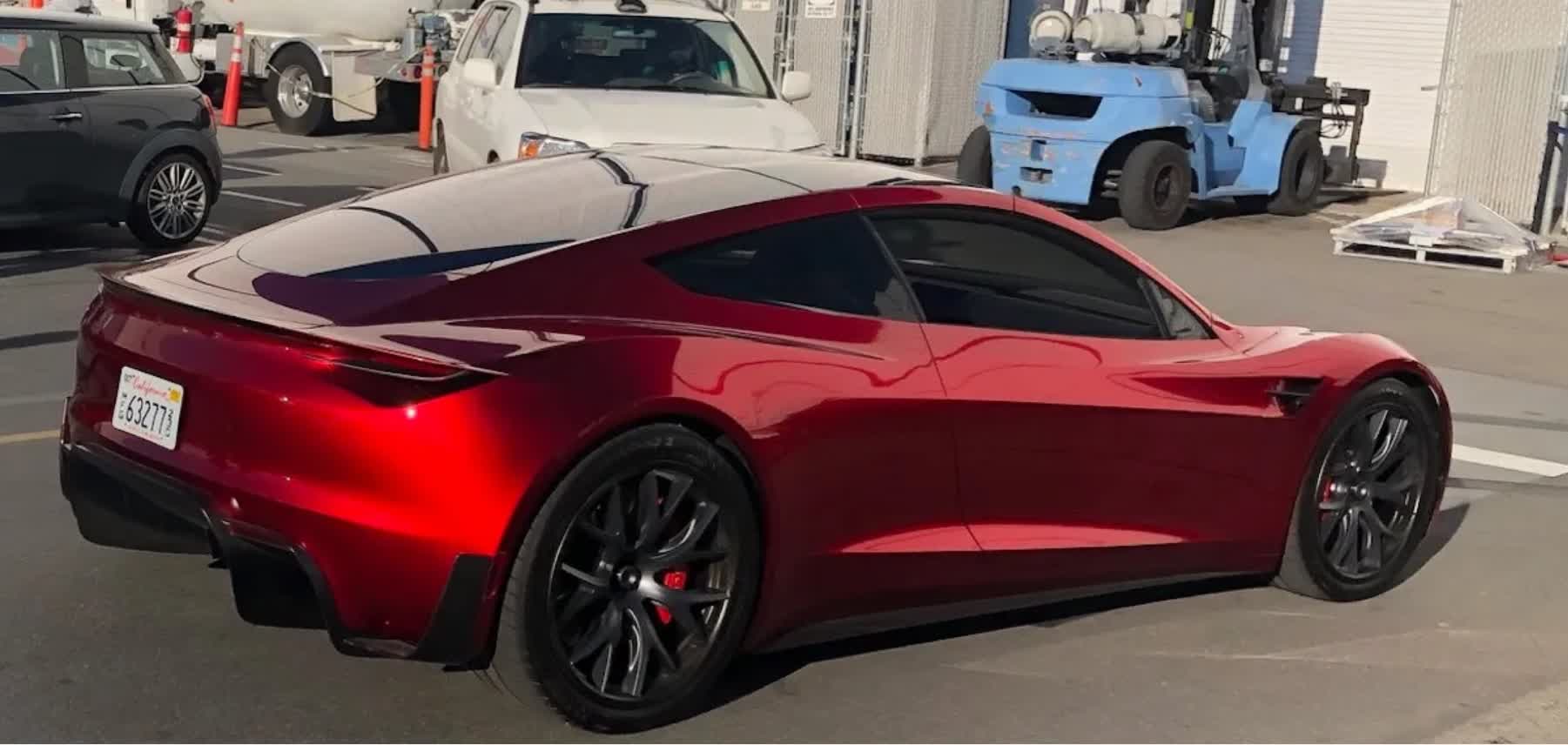Bottom line: The second-gen Roadster certainly won't set any production speed records, but it could break all sorts of other records if Tesla is able to deliver on Elon Musk's latest promise.

Tesla showcased a prototype version of its gen two Roadster way back in 2017. At the time, the company said the vehicle would enter production in 2020 with a starting price of $200,000. We even got a sneak peak of the Roadster's insane performance in 2018 thanks to automotive enthusiast and comedian Jay Leno, but the production timetable ultimately proved wildly inaccurate.
The Covid-19 pandemic threw a monkey wrench into production operations around the globe, but here we sit in early 2024 and Tesla still has not launched the second-gen Roadster.
In his latest remarks on the subject, Musk now claims a new prototype will be unveiled by the end of this year before production starts in 2025. The executive doubled down on a previously promised partnership with SpaceX, noting that the Roadster will have some rocket technology in it.
The only way to make something cooler than the Cybertruck, Musk added, is to combine Tesla and SpaceX tech to create something that is not even really a car.
As for performance, "blistering" is about the only word to describe it. Musk claims the new Roadster will boast a 0-60 mph time of less than one second. Should it come to fruiting, it would be the quickest production vehicle by a significant margin. As of this writing, Tesla's website still lists a 0-60 mph time of 1.9 seconds, a top speed of 250+ mph, and a driving range of 620 miles.
When interviewer Don Lemon asked if the Roadster would have wings (perhaps half joking), Musk said it will not have big wings. Will it be able to fly? "Maybe," Musk teased.
Rather than a traditional steering wheel, the vehicle will use a drive-by-wire yoke system that Musk said is sort of like what you would find in an airplane.
https://www.techspot.com/news/102320-roadster-combine-tesla-spacex-tech-create-something-not.html